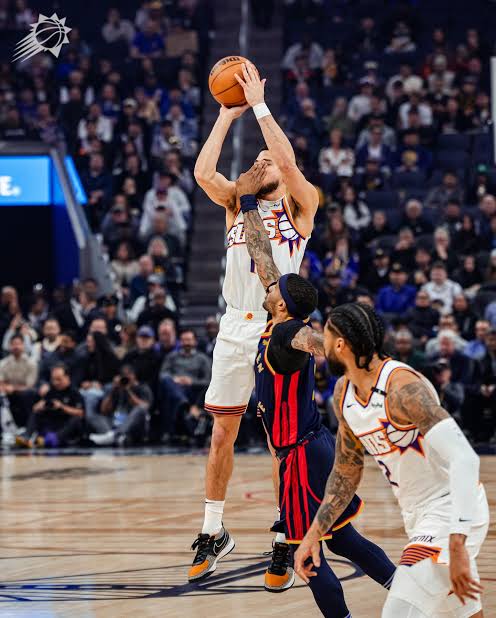Auston Matthews Injury Just the Beginning: Leafs Explore LTIR Loophole to Gain Salary Cap Flexibility
Auston Matthews’ return to the Toronto Maple Leafs lineup after dealing with an upper-body injury was relatively short-lived. Following last Friday’s win over the Buffalo Sabres, it was revealed that Toronto’s captain aggravated the injury during the game. As a result, Matthews did not play in the final two games leading into the Christmas break.

Some fans have expressed frustration with scarce details about Matthews’ injury but it fits the organization’s M.O. on handling injury information. As a Leafs fan, I hope the issue is minor and that Matthews will return to the ice soon. At the same time, I want him to be fully healthy before doing so.
Many fans and analysts are now considering the previously unthinkable: a situation in which Matthews stays out for the remainder of the regular season.
It sounds extreme, but it could give the Leafs a huge advantage when the postseason arrives. Matthews could spend the remainder of the regular season resting up and treating any lingering injuries. Then, when the postseason arrives, he comes back at full health.
For casual NHL fans, this might sound like a farfetched idea. In truth, the Maple Leafs would not be doing anything new. Other NHL clubs have already set a precedent for such a plot (I’m looking at you, Vegas!)
What is LTIR?
The NHL has implemented a hard salary cap since the 2005-2006 season. Each year, teams must not exceed the hard cap limit. The cap ceiling typically increases yearly, with the current season’s salary cap set at $88 million.
There are various rules and means for teams to manipulate the salary cap. One common rule allowing teams to get cap relief is long-term injury reserve (LTIR). LTIR is complicated if you get into the minutia of the rules, but allow me to do my best to explain it in brief, simple terms.
Essentially, LTIR affords teams a means to exceed the salary cap while a player is inactive. A player must be expected to miss at least 10 games and 24 days of the season to be eligible for LTIR. The amount a team can exceed the salary cap is calculated by taking the LTIR-eligible player’s cap hit and subtracting the team’s available cap space before placing the player on LTIR.
Let’s say a team is $1 million under the salary cap, and they put an injured player with a $5 million cap hit on LTIR. That team can now exceed the salary cap by $4 million. $5 million (player’s cap hit) minus $1 million (cap space before LTIR) equals $4 million.
There are some additional conditions regarding LTIR. For example, a different calculation is required if a team is not cap-compliant without using LTIR. The most important condition of LTIR is that a team must be under the cap when reactivating a player. Otherwise, the player must remain on LTIR.
The LTIR loophole
There is a major exception to the LTIR rules and conditions. The salary cap only applies to the regular season, not the playoffs. This means a player can come off LTIR for the postseason, even if it puts the team over the cap. This is commonly called the “LTIR loophole.”
There have been numerous instances in recent years that teams have used this workaround to their advantage and with successful results. The Blackhawks won the Stanley Cup in 2015 as Patrick Kane returned during the playoffs after an LTIR stint from a fractured collarbone.
Kane only ended up missing 21 regular season games before the postseason. More brazen uses of the loophole occurred more recently. The Tampa Bay Lightning won the Stanley Cup in 2021 after Nikita Kucherov spent the entire regular season on LTIR. Kucherov returned for the playoffs, contributing 32 points en route to the championship. All whilst the team was able to exceed the salary cap by $18 million.
The Vegas Golden Knights are the most recent — and perhaps most infamous–practitioners of the LTIR loophole. Team Captain Mark Stone spent significant time on LTIR in each of the last two seasons. Both times, Stone returned for the playoffs after Vegas added significant pieces to their roster, including Noah Hanifin, Ivan Barbashev, and Tomas Hertl, and helped lead the team to its first Stanley Cup in 2023.
What would Matthews on LTIR mean for the Leafs?
While we don’t yet know the extent of Matthews’ latest injury, with the team comfortably in a playoff spot, I have pondered what the Leafs could accomplish if he spent the remainder of the regular season on LTIR and returned for a postseason run.
For starters, the Leafs would gain a significant cap advantage. According to PuckPedia, the Leafs currently sit $631,562 under the cap, while Matthews carries the highest cap hit in the NHL at $13.25 million. This would allow the Leafs to exceed the $88 million cap by more than $12.5 million.
Adding that much cap premium from just one player would open a myriad of potential moves for Brad Treliving. The trade market was already active before the NHL’s annual roster freeze, and there will be more moves before the trade deadline on March 7th.
The New York Rangers have been actively making moves, trading Jacob Trouba and Kaapo Kakko to Anaheim and Seattle, respectively. Could other Rangers, like Ryan Lindgren or Chris Kreider, be next?
Or how about the rumoured issues between J.T. Miller and Elias Pettersson in Vancouver? Both players have publicly rebuked the speculation and dismissed it as a media concoction. Daily Faceoff’s Frank Seravalli believes that the situation has been exaggerated as well. However, shocking trades have happened before, so a move cannot be completely ruled out.
Reports surfaced that Kraken center Yanni Gourde would be willing to waive his modified no-trade clause for the Maple Leafs. Could a deal between Seattle and Toronto be in the works?
All this is speculation for now, with nothing set in stone. Either way, if the Leafs were given more than $12 million in cap flexibility, it certainly could open up a slew of potential moves.
Could they? Would they? Should they?
There would be pros and cons of the Leafs exploiting the LTIR loophole. For starters, there is no guarantee the team would remain firmly in the playoff picture without Matthews. There is reason to believe they could, considering their current place in the standings and the team’s 8-4-0 record without him this season.
The team would also have to weigh Matthews’ feelings on the subject. Matthews is undoubtedly set on representing the USA in the Four Nations Face-Off in February. LTIR would make that an impossibility. This is delicate ground for the Leafs’ front office to navigate. On one hand, management should be supportive of the player. On the other hand, they have to prioritize their franchise’s postseason chances over an in-season tournament.
The other obvious consideration is suffering a potential Vegas-style heel reputation from fans of other NHL teams…just kidding. The Leafs are already the most polarizing franchise in hockey, and utilizing LTIR isn’t going to change that. So I say, embrace the villain role. Leafs fans will stay loyal, and haters will still be haters.
The LTIR loophole is becoming a frequent topic of debate. Nobody knows if or when the league might alter the rules to prevent teams from using it. The current collective bargaining agreement is up in 2026, and possible LTIR changes could come from a new CBA. This could be the perfect time for the Leafs to use it for their benefit.





